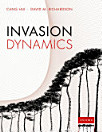關於本電子書
Until now, biological invasions have been conceptualised and studied mainly as a linear process: from introduction to establishment to spread. This volume charts a new course for the field, drawing on key developments in network ecology and complexity science. It defines an agenda for Invasion Science 2.0 by providing new framings and classification of research topics and by offering tentative solutions to vexing problems. In particular, it conceptualises a transformative ecosystem as an open adaptive network with critical transitions and turnover, with resident species heuristically learning and fine-tuning their niches and roles in a multiplayer eco-evolutionary game. It erects signposts pertaining to network interactions, structures, stability, dynamics, scaling, and invasibility. It is not a recipe book or a road map, but an atlas of possibilities: a 'hitchhiker's guide'.
關於作者
Cang Hui is a Professor of Mathematical Biology and holds the South African Research Chair in Mathematical and Theoretical Physical Biosciences at Stellenbosch University. He is a trustee of the International Initiative for Theoretical Ecology. He has published widely on biological invasions and ecological networks.
David M. Richardson is Director of the Centre for Invasion Biology at Stellenbosch University. He is a member of the Species Survival Specialist Group on Invasive Organisms for the International Union for Conservation of Nature. His main expertise is in invasion ecology, and particularly alien tree invasions. He has published extensively on invasive species and restoration ecology.
為這本電子書評分
歡迎提供意見。
閱讀資訊
智慧型手機與平板電腦
筆記型電腦和電腦
你可以使用電腦的網路瀏覽器聆聽你在 Google Play 購買的有聲書。
電子書閱讀器與其他裝置
如要在 Kobo 電子閱讀器這類電子書裝置上閱覽書籍,必須將檔案下載並傳輸到該裝置上。請按照說明中心的詳細操作說明,將檔案傳輸到支援的電子閱讀器上。





